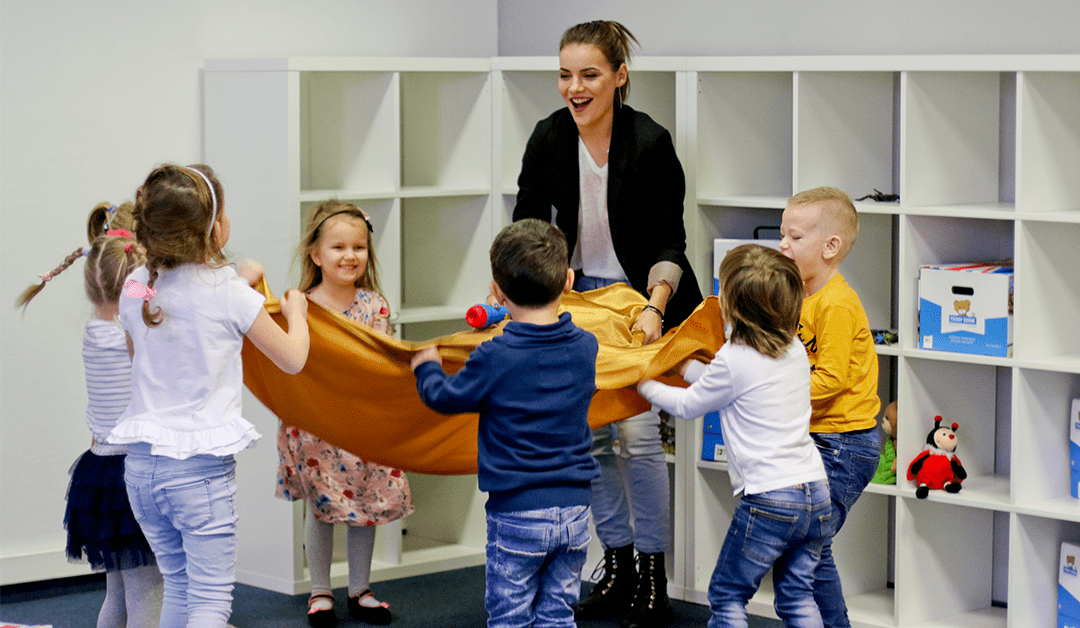The brain and a mischievous teddy bear
To begin with, let’s take a look at the most complex system in the universe: the human brain – a priceless treasure which has been given to every one of us by Mother Nature.
Did you know that when you are awake your brain produces 25 J of energy, the same amount that is required to make a lightbulb work? Every human brain consists of 100 billion neurons. That is over 16 times more than the population of the Earth! There is more: every neuron is able to connect with up to 10 thousand more nerve cells. A neuron has a diameter of around 0.1 mm, but its length can reach even several metres. While the brain constitutes only 2% of our body mass, it uses over 20% of the energy which the body produces. Its greatest need is oxygen, as any shortage can cause it serious damage. Many books have been written about the unlimited possibilities of the brain; however, we will focus on presenting several interesting facts.
Perhaps you are wondering what the brain and our mischievous teddy have in common… they are both surprising and brilliant, since Teddy Eddie is unquestionably a master in conducting brain-friendly classes. During lessons with him, children can learn English by using their cognitive abilities in a natural way. This makes the learning process the most effective.
Neurodidactics on a flying carpet
Getting straight to the point, let’s take a closer look at how Teddy Eddie implements the neurodidactic approach by playing with children on the flying carpet… in English. Today we will analyse:
- the idea that a lesson is not a transmission belt… This may sound strange, but everything will become clear soon,
- the synchronisation of the brain’s hemispheres and its educational value,
- the pragmatism of our brains, which always ask about meaning.
A one-man show and the transmission belt theory
I would risk a guess that all of us, at least once, have had to sit through a lesson that resembled a (bad) one-man theatre performance. It was so boring, that the only means of survival was usually… a good nap. The verbal activity of this sole actor did not leave space for any interaction, and their long, boring monologue was very much like a transmission belt.
I think it is not hard to understand that this is not the right way. A lesson which is designed specifically for the cognitive abilities and needs of the brain is the complete opposite of the situation described above.
Here we discover the first advantage of the Teddy Eddie method – a method which is basically the quintessence of brain-friendly learning. What is this advantage and how does it work? It says “No” to excessive verbal/non-verbal input from the instructors. The teachers play the role of mindful guides on various paths and ways of language education, and the real stars are the children and their needs. Under the baton of the mischievous Teddy, the instructors create a safe space for linguistic communication between the children. They play first fiddle in this performance. Immersed in the vast ocean of the language, they finally begin to produce it on their own – all while they are playing and feeling safe. After all, Teddy Eddie is a great companion, who is very understanding. The focus put on the communication process (from the very first lesson onward) results in fluency, efficiency in speech, and an absence of communication barriers during later stages of this English-learning adventure.
Two is better than one, or the synchronisation of the brain hemispheres and its importance
During our lifetime we often face challenges which require such specific skills as the ability to quickly analyse a particular situation and synthesise various data.
These are processes that can be difficult to control. Noticing certain aspects of a problem and finding solutions often depend on how efficiently our brain works.
This efficiency stems mostly from the proper cooperation of the two hemispheres – the left one, which is responsible for logical thinking and linguistic skills, and the right one, which controls the imagination and emotions. The hemispheres can be synchronised. This allows for harmonious cooperation, faster processing of information and its easier synthesis.
Let’s look at the functions of the two hemispheres.
| FEATURES OF THE LEFT HEMISPHERE | FEATURES OF THE RIGHT HEMISPHERE |
| Time | Space |
| Sequence | Here and Now |
| Fact | Symbol |
| Language | Music |
| Memory | Recognition |
| Analysis | Synthesis |
| Matter | Spirit |
| Arithmetic | Geometry |
| Components | Whole objects |
| Rationality | Intuition |
These are just the most basic functions, among many others.
As most of us are aware, school is a place where creativity, originality, vision and free forms of expression are usually neglected. What is more, there is no place for just being yourself, because of the usual structure of the lesson and the organisation of its time and form. Children are expected to adopt, memorise, and later repeat the acquired information – which is often out-of-date and useless.
It is easy to deduce that this process involves mainly the left hemisphere, while the right one is hugely neglected.
Now imagine what could happen if the learning process involved both hemispheres? Two parts of the same organ developed and programmed for synchronised and harmonious cooperation.
I have some good news here. The brilliance of the Teddy Eddie method lies in the activation of both hemispheres, which takes place during classes. How, where, when does this happen? When, for example, children listen to stories illustrated on colourful cards; when they re-enact those stories by themselves; when they learn new vocabulary, while dancing to music and pointing at the correct images; when they manipulate the language in a funny way; when they play ‘Shop’ and many other games; when they listen to songs, sing along, and use gestures; when they work with a book, listen to the instructions of the teacher and combine the tasks; and during many other activities not mentioned here.
Thanks to the synchronised cooperation of both hemispheres children can learn in accordance with the natural method of knowledge acquisition, which allows them to gain new skills and achieve great results.
The practical brain: children (and others) learn things that interest them
There is one thing the brain always wants to know about: THE MEANING. Do I need this? If it does not receive a satisfactory answer during the first minute of the lesson… it will lose all interest in the subject.
And interest in the subject is the key to a successful lesson. No matter how fantastic a subject may appear, if it does not arouse children’s curiosity… the lesson will fail.
Children learn faster when they find something interesting. Our task as adults is to present the subject of the lesson in such way that pupils will be eager to explore it. This means it is not the subject itself which is most important, but rather the manner in which it is presented.
Children (and their brains) adore:
- novelty – it is best to speak about the subject in a new, fresh style, or present it in a different way,
- surprising information – throwing in some unexpected trivia can make monotonous material much more interesting,
- telling stories – stories usually affect people a lot more than just dry facts; it is worth focusing on storytelling, as it stimulates the imagination,
- information about other people – humans are social beings, therefore information concerning other people and their stories can interest us greatly and remain in our memories for a long time.
In other words, when does a child find learning most interesting…? When they meet Teddy Eddie, who knows how to catch their interest and spark a passion for learning. Why is that? Because he does it in a child-friendly way: with humour, acceptance and even mistakes (which is a topic for another time); a way that is colourful, dynamic, filled with multifaceted knowledge; warm, safe and stress-free; filled with exercise, playtime, stories, songs and games; diverse, since there is no such thing as two identical lessons; and most of all, a way that respects children’s needs, develops along with them and grades difficulty levels adequately; all challenges are tailored to students’ abilities, since Teddy Eddie knows very well that every person comes into this world a genius, and only the right stimulation can unlock the invaluable potential slumbering deep inside us… Especially in the youngest learners!
Until next time! 🙂
_______________________________________________________________________________________________
The author of this article is Dominika Muńko – a philosopher, neurocognitive scientist, English teacher, methodologist totally fascinated with cognitive capabilities of the brain; founder of a language school and author of licensed and award-winning programs in the field of speed reading, memory techniques, attention and effective learning – Memo (more: www.szkolamemo.pl); active member of international research teams, among others in Foggi, Modena, New York and Kelaniji.
Learn more about the Teddy Eddie method HERE






